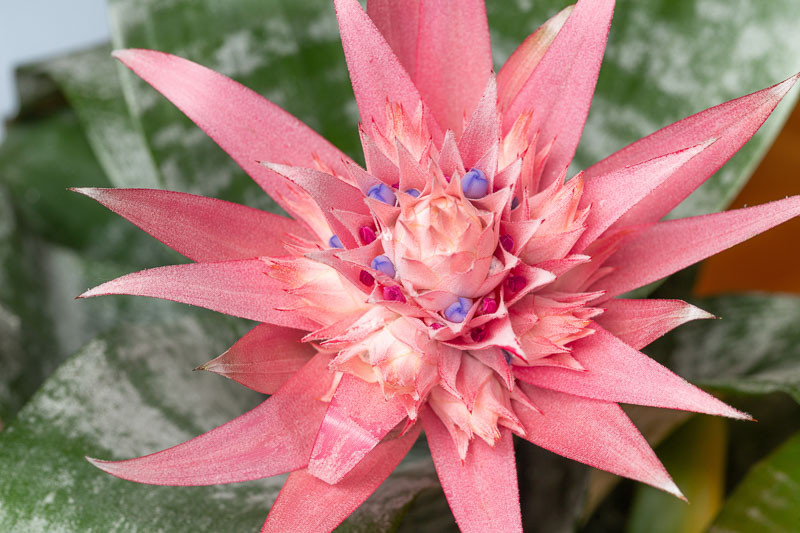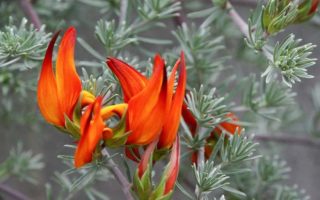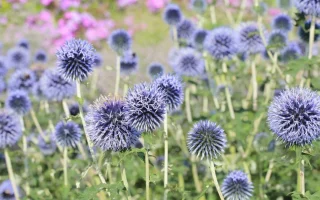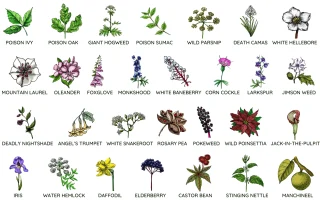lettersforvivian.org – The Urn Plant (Aechmea) is a distinctive and eye-catching species in the Bromeliad family, known for its vibrant flowers and striking rosette of leaves. Native to Central and South America, the Urn Plant is a popular ornamental plant that adds color, texture, and interest to both indoor and outdoor spaces. Its unique flowering structure, which resembles an urn or vase, is what gives this plant its name. In this article, we will explore the features, care, and benefits of growing the Urn Plant flower in your garden or home.
What is the Urn Plant Flower?
The Urn Plant, scientifically known as Aechmea, is a type of bromeliad that thrives in tropical and subtropical regions. The name “Urn Plant” comes from the shape of its flower stalk, which resembles a vase or urn, surrounded by long, arching leaves. The plant produces clusters of small, tubular flowers in vibrant colors, typically pink, red, or purple, which are borne atop a tall flower spike. These flowers are often bracted by brightly colored, leathery bracts that give the plant its dramatic appearance.
Urn Plants are relatively low-maintenance and are often grown for their ornamental appeal rather than their flowers alone. The plant’s foliage is just as striking, featuring narrow, spiny-edged leaves that form a tight rosette around the center. The flowers are typically short-lived but are replaced by new blooms, ensuring the plant remains a stunning focal point.
Physical Characteristics of the Urn Plant Flower:
- Flowers: The Urn Plant’s flowers are small and tubular, typically ranging from pink to red, though they can sometimes appear purple or blue. The flowers are clustered on a tall, upright spike, and are often surrounded by colorful bracts that are modified leaves. These bracts can be red, pink, or even purple, creating a beautiful contrast with the flowers. The flowering period is relatively short, typically lasting for a few weeks, but the plant often continues to look attractive due to its colorful bracts.
- Foliage: The leaves of the Urn Plant are long, narrow, and arching, forming a rosette around the base of the flower spike. The foliage is typically green with silver or purple markings, giving the plant a striking appearance even when not in bloom. The leaves have spiny edges, which adds texture and visual interest to the plant. The rosette-shaped growth pattern of the leaves gives the plant its urn-like appearance, which is a key feature of its ornamental appeal.
- Growth Habit: Urn Plants are typically compact, growing between 1 to 3 feet (30 to 90 cm) in height, depending on the variety. The plant forms a rosette of leaves that can spread up to 2 feet (60 cm) in diameter. While the flowers themselves are short-lived, the plant maintains its impressive form for months after blooming. As a tropical plant, it prefers warmth and humidity and is often grown as a houseplant in cooler climates or planted in outdoor gardens in tropical or subtropical regions.
Varieties of Urn Plant:
There are several species and varieties of Urn Plants, each with unique characteristics and variations in flower color, size, and growth habit. Some of the most popular varieties include:
- Aechmea ‘Blue Rain’: This is one of the most popular varieties of Urn Plant, known for its stunning blue and purple flowers. The plant has a large rosette of silver-striped leaves, and the flowers are held above the foliage on a tall spike. The bracts are bright pink, which adds to its dramatic appearance.
- Aechmea ‘Burgundy’: This variety features dark purple or burgundy bracts, providing a rich, bold contrast to the pink or red flowers. It has dark green foliage with silver markings, which intensify its ornamental value.
- Aechmea ‘Pink Champagne’: This variety is known for its soft pink bracts and delicate pink flowers. It has glossy, deep green leaves with silver markings that help make it a beautiful focal point in both indoor and outdoor settings.
- Aechmea ‘Gamosepala’: Known for its bright red flower spike and green, strappy leaves, this variety produces a spectacular display of flowers and bracts that is particularly striking when placed in a sunny garden or large container.
Growing the Urn Plant Flower:
Urn Plants are relatively easy to grow and care for, making them a great choice for both beginner and experienced gardeners. Below are some key considerations for successfully growing an Urn Plant.
- Planting Location: Urn Plants thrive in warm, humid conditions, making them perfect for tropical or subtropical climates. However, they can also be grown indoors as houseplants in cooler regions. If growing outdoors, choose a location that receives bright, indirect sunlight or partial shade. In areas with direct sunlight, it’s best to provide some light shade to prevent the plant from becoming scorched.
- Soil Requirements: As epiphytes, Urn Plants do not require soil in the traditional sense. They can grow on trees or rocks in their native habitat, but when planted in the ground or containers, they prefer well-draining soil or potting mix that retains some moisture but does not stay too wet. A mixture of orchid bark, perlite, and potting soil is ideal for container planting.
- Watering: Urn Plants are sensitive to water quality. They prefer non-chlorinated water, so using rainwater or distilled water is recommended. The plant has a central rosette where it collects water, and it’s important to keep this “urn” filled with water at all times. However, the plant should not be left sitting in stagnant water for long periods, as this can lead to rot. Ensure that excess water can drain out of the plant’s base if grown in a container.
- Temperature and Humidity: The Urn Plant thrives in warm temperatures ranging from 65°F to 85°F (18°C to 29°C). It prefers high humidity, so placing it in a humid environment such as a bathroom or greenhouse is ideal. If grown indoors, you can increase humidity by placing the plant on a tray with pebbles and water or by using a humidifier.
- Fertilization: Fertilizing is not required for Urn Plants, but occasional feeding with a diluted, balanced liquid fertilizer can promote growth and flowering. Apply the fertilizer once a month during the growing season (spring to fall). Avoid fertilizing in the winter when the plant is dormant.
Caring for Urn Plant Flowers:
- Pruning: Once the Urn Plant has finished flowering, the main flower spike will die off. It’s important to prune the spent flowers to maintain the plant’s appearance. New shoots, or “pups,” will often appear around the base of the plant. These can be left to grow and will eventually become new plants, or you can remove them to propagate and create new plants.
- Repotting: If growing in containers, repot the plant when it becomes root-bound or when you want to propagate. This typically happens every 2 to 3 years. Be sure to use a slightly larger container and fresh potting mix to help the plant thrive.
- Pest Control: Urn Plants are generally pest-resistant but can sometimes attract mealybugs, scale insects, or aphids. Check your plant regularly for signs of pests and treat with insecticidal soap or neem oil if necessary.
Why Grow Urn Plant Flowers?
- Unique Appearance: The Urn Plant’s striking appearance, with its bold foliage and colorful flower spike, makes it an eye-catching addition to any garden or home. Its unique urn-like flower structure makes it a conversation starter and an impressive focal point in both tropical and indoor settings.
- Low Maintenance: Urn Plants are relatively easy to care for, requiring little attention once established. Their ability to thrive in low-light conditions makes them ideal for areas with indirect light, such as windowsills or shaded garden corners.
- Long-Lasting Color: While the flowers are short-lived, the colorful bracts of the Urn Plant can last for weeks, ensuring your plant continues to look vibrant long after blooming. The plant’s rosette of leaves also provides year-round interest, even when it’s not in bloom.
- Attracts Pollinators: The flowers of the Urn Plant attract hummingbirds, bees, and butterflies, adding life and movement to your garden. By planting this bromeliad, you can help support local pollinator populations.
Common Issues and How to Address Them:
- Overwatering: Overwatering is one of the most common mistakes when growing Urn Plants. Ensure that the central rosette is filled with water, but make sure it doesn’t sit in stagnant water for too long. Allow the water to drain out if necessary, and ensure the plant has good air circulation to prevent rot.
- Pests: While Urn Plants are relatively pest-resistant, they may attract small insects like mealybugs or aphids. Regularly inspect your plant for signs of pests and treat accordingly with insecticidal soap or neem oil.
- Low Humidity: If grown indoors, the dry air can cause the plant to suffer. Increase the humidity around the plant by using a humidifier or placing a water tray beneath it.
Conclusion:
The Urn Plant is a striking and unique flower that can bring bold color and texture to your garden or home. With its colorful bracts and tubular flowers, it’s sure to be a standout addition. Whether grown indoors as a houseplant or outdoors in tropical climates, the Urn Plant is relatively easy to care for and adds lasting beauty to any space. Its low-maintenance needs and ability to attract pollinators make it a wonderful plant for gardeners of all experience levels.




